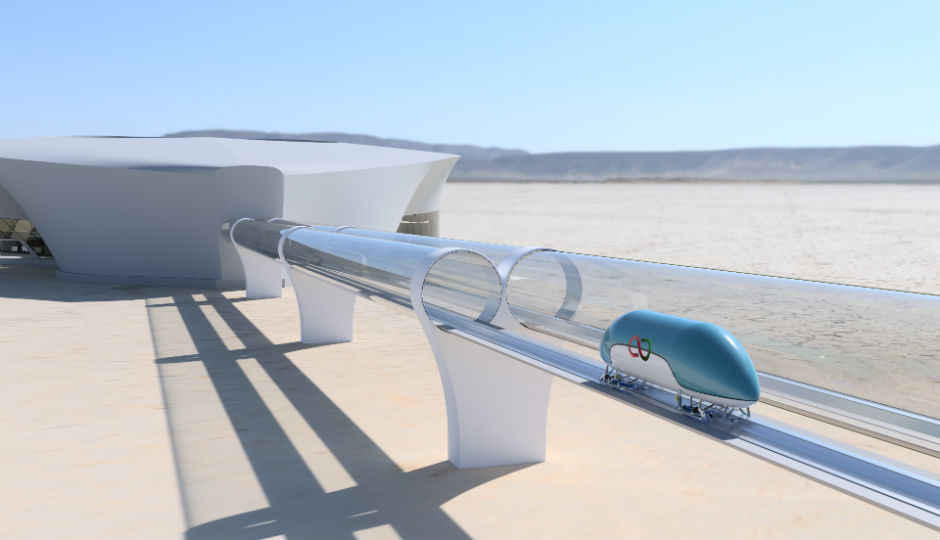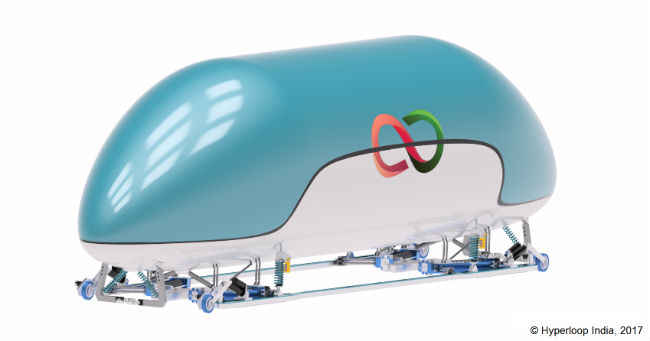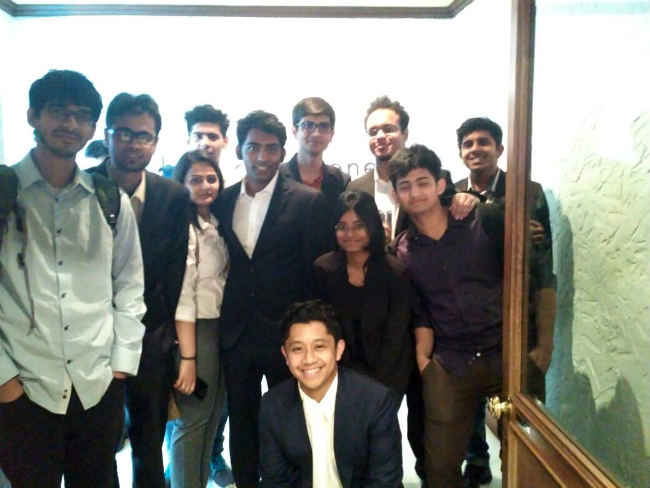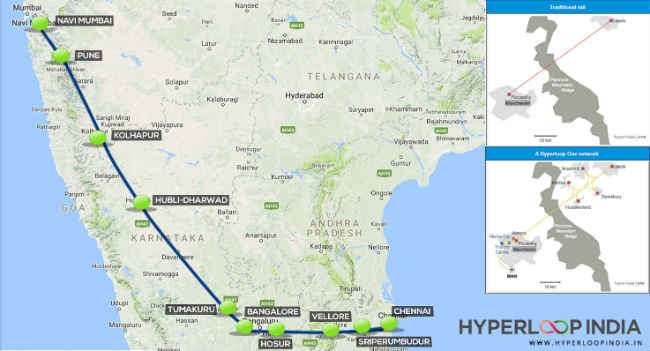Meet the team building a Hyperloop pod right here in India

Hyperloop India is in the final stages of both, the SpaceX Design Challenge and the Hyperloop One Global Challenge.
Ambitiously, they call themselves Hyperloop India, a team that hopes to be intimately involved with the Hyperloop project in future. They’re a team primarily consisting of students from India’s BITS Pilani engineering college, and management institutes IIM Ahmedabad (IIM-A) and the Indian School of Business (ISB). They are also representing India in the Final Design Stage of SpaceX’s design challenge.
Hyperloop India is building a pod for Elon Musk’s brainchild, the Hyperloop transportation concept. They are also amongst 35 semi-finalists in the Hyperloop One Global Challenge. Here’s a handy list of the Indian teams who made it to the semi-finals.
These Indian teams are amongst the 35 semi-finalists in Hyperloop One's challenge
Building the pods
However, unlike most other teams in the Hyperloop One Global Challenge, Hyperloop India offers an unique opportunity to understand the pods that you will actually be travelling in. The company is working towards manufacturing India’s first scalable prototype. Known as the OrcaPod (since it looks like an Orca Whale), Hyperloop India's design will be raced at SpaceX’s test track in California. If it wins, the team could very well be part of the “Make In India” efforts Hyperloop One talked about today. It can reach speeds of 460 kph, claims Hyperloop India.
OcraPod, the design Hyperloop India is working on
“Planes travel at high altitudes because of less resistance, imagine a plane travelling inside semi-vacuum,” explains Sibesh Kar, Founder & Team Leader at Hyperloop India. The creation of vacuum within the Hyperloop’s tubes almost eliminates friction, thereby allowing faster speeds. For reference, the Hyperloop is supposed to travel at speeds over 1000 kph when it is fully operational. Of course, no one has achieved these speeds yet.
This, though, sparks another question. How is a human sitting within a pod supposed to withstand such speeds? Kar has a simple answer for that. “The difference is between acceleration and velocity,” he says, “you feel acceleration, not velocity.” The concept is the same as flying, you feel the pressure when the plane is taking off, and when it’s landing, but it’s smooth sailing otherwise. This is exactly what Kar says will happen with the Hyperloop.
When designing the pods, the team was met with another challenge, that of choosing the material it should use. After much back-and-forth, between carbon fiber and aluminium, Hyperloop India settled for the latter. “Aluminium is scalable,” Kar says.
Hyperloop India
The team estimates that designing, sourcing, manufacturing, testing and the logistics of their pod prototype will cost in the ballpark of around 60 lacs, which would make it one of the most frugally built pod prototypes in the competition.
Designing the route
All of the above is pretty much handled by the BITS Pilani side of the team. Kar says Hyperloop India is more focused on engineering right now, than the routes. However, they have suggested one of the routes that Hyperloop One is going to consider.
Hyperloop India thinks Mumbai to Chennai, via Bengaluru, would be a good route to connect. The total distance covered on this route is 1,102 km and it will take 50 minutes in a fully functional Hyperloop system.
Connecting two of India’s biggest ports of course boosts trade capacity. The system would ideally connect the Arabian Sea to the Bay of Bengal, notes Kar. It creates a Suez Canal-like link between India’s costs. The team had to consider factors like geography and transformative effects of such a route, meaning its impact on trade and lives.
When suggesting the route to Hyperloop One, the team presented all possible trade implications, including the number of passengers that would be available, government policies and so on. It performed kind of a cost-benefit analysis of the route. Moreover, it suggested a corridor that isn’t currently being taken care of by the government. “That’s why we didn’t suggest Delhi-Mumbai,” says Kar, “the government already has sanctioned funds for that corridor, for other means of transport.”
Working with others
Government policies are also taken into account. Hyperloop India has TRA, a law firm, on board for registering the other teams etc. The company has been working side-by-side with Invest India and Startup India, who are helping its business efforts. It’s also trying to build a stakeholder network for future plans, if they so materialise. The team is also working with the Rail India Technical and Economic Service (RITES) to "explore how the Hyperloop could be a solution to the Mission 350+ initiative". Mission 350+ is an initiative by the Indian Rail Ministry to introduce magnetic levitation in Indian rail, while slowly phasing out the legacy infrastructure that the country currently has.
Advisors and partners for Hyperloop India include Faiveley Transport, Invest India, RITES, Niti Aayog, DP World India and Startup India. Of these, DP World India, a shipping company, holds a stake in the Hyperloop One Dubai project already. Hyperloop India's primary investment comes from Invest India and Faiveley Transport. However, the team can't get funds till its model is approved by SpaceX, which is awaited at the moment.
Of course, all this is a long way from completion right now. Hyperloop India has to first win the SpaceX Design Challenge, or the Hyperloop One challenge. It’s in the second to last stage for both of those competitions right now. Winning this would be a step in the right direction, but the a full fledged Hyperloop is a long way from being a reality.
When asked what its involvement with Hyperloop One would be, Kar admits that things are still at a nascent stage. Sources at Hyperloop One say that the inputs these teams provide are important, and the company gets local knowledge through them.
Note: All photos are property of Hyperloop India.









